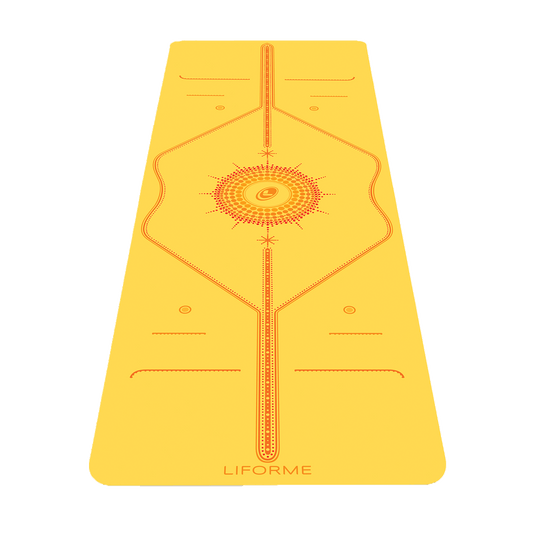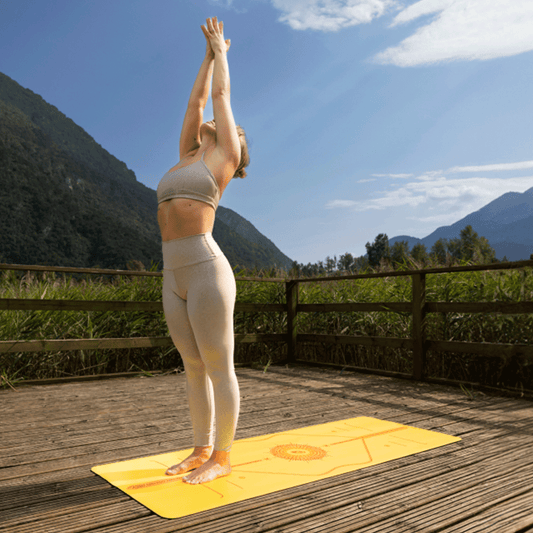Starting any kind of mediation practice can be daunting. You’ve probably heard a lot about the benefits of meditating, but you’re unsure just how to go about it. While there are many types of meditation, it’s often helpful for beginners to start with something that has clear steps to follow. Bringing your attention to each chakra in turn, as described below, can be a helpful method.
Understand Your Chakras
The chakras are a system of the subtle body, which means they are not strictly anatomical. Instead, they are thought to control the flow of energy (also called prana) through your body. Ideally, energy moves unimpeded from the base of your spine to the crown of your head but sometimes it gets stuck along the way. Visualizing the chakras helps identify where you are blocked and begin the process of getting things flowing.
Chakra means wheel in Sanskrit, so they are often shown as spinning wheels of energy. Each of the seven chakras is associated with an area of the body, a colour, and a seed syllable that can be used for mantra chanting.
1. Muladhara - Root (base of the spine)
Colour: Red
Mantra: Lam
Associated with: Feeling grounded and stable
2. Svadhistana - Sacral (lower abdomen)
Colour: Orange
Mantra: Vam
Associated with: Creativity, intimacy, fertility, sexuality, pleasure
3. Manipura - Solar Plexus (mid abdomen)
Colour: Yellow
Mantra: Ram
Associated with: Confidence and power
4. Anahata - Heart
Colour: Green
Mantra: Yam
Associated with: Love and trust
5. Vishuddha - Throat
Colour: Blue
Mantra: Ham
Associated with: Self-expression, truth, communication
6. Ajna - Third Eye (forehead)
Colour: Indigo
Mantra: Om
Associated with: Intuition, seeing things clearly
7. Sahasrara - Crown (top of the head)
Colour: Purple
Mantra: Silence
Associated with: Wisdom and knowledge
How to Know Which Chakra is Blocked
There’s no foolproof way to diagnose a blocked chakra but there are a few methods you can use as a starting place.
1. Pain or discomfort in your body
A pain in your abdomen or headaches, for instance, could guide you.
2. Difficulty in an associated area
If you are struggling with confidence, creativity, or speaking up, identify the corresponding chakra and focus on that.
3. Work the whole system
If you’re not sure, give equal attention to each chakra. You may discover specific areas to home in on along the way.
Chakra Meditation Methodology
- Visualize each chakra as a spinning wheel, a lotus flower, a bright light, or anything else that works for you.
- Move from the bottom of your spine upwards to the top of your head.
- Picture the chakra in its designated colour and repeat the associated mantra either out loud or in your mind.
- Imagine energy flowing freely through the chakra as you breathe.

Chakra Meditation Step-by-Step
Find a quiet place and a comfortable seat. If you are new to meditation, check out our beginners' guide for more info on how and when to sit. For chakra meditation, a cross-legged or kneeling position works. If you’re cross-legged, sit up on a block or bolster so that your knees are below your hips. This makes it easier to keep your spine long.
Sit and breathe for a few minutes to ground into your body. Start by noticing your breath without changing it. Then begin to purposefully lengthen and deepen your inhale and exhales.
1. Muladhara - Root
Continuing your deep breaths, bring your attention to the base of your spine. Visualize a red wheel of energy there. Chant the syllable ‘lam’ on each exhalation for a minute or two, or longer if you choose
2. Svadhistana - Sacral
Bring your hands to your belly below your navel. This is the location of the sacral chakra. Picture a spinning orange wheel there as you chant ‘vam’.
3. Manipura - Solar Plexus
Move your hands to your abdomen above your navel. Visualize a yellow wheel spinning at your solar plexus. Chant the syllable ‘ram’.
4. Anahata - Heart
Bring both palms flat on your sternum. Feel your chest rise and fall with each breath. The colour of the Anahata chakra is green and the syllable is ‘yam’.
5. Vishuddha – Throat
Take your hands into Anjali Mudra at your throat. Feel the vibrations there as you chant ‘ham’ and visualize blue.
6. Ajna - Third Eye
Move your mudra to the centre of your forehead. Chant ‘om’ and picture an indigo wheel or lotus flowing with energy.
7. Sahasrara - Crown
Take Anjali Mudra to the top of your head with your fingers pointing upwards as you picture purple light and breathe deeply without chanting.
Open Your Mind
Any system that gives structure to a new meditation practice makes it easier to stay engaged and consistent. Anchoring your attention to your chakras through touch, visualization and breath are powerful tools to move energy and clear your mind.





































